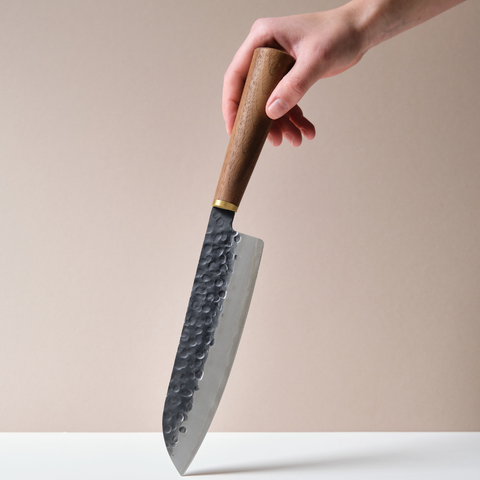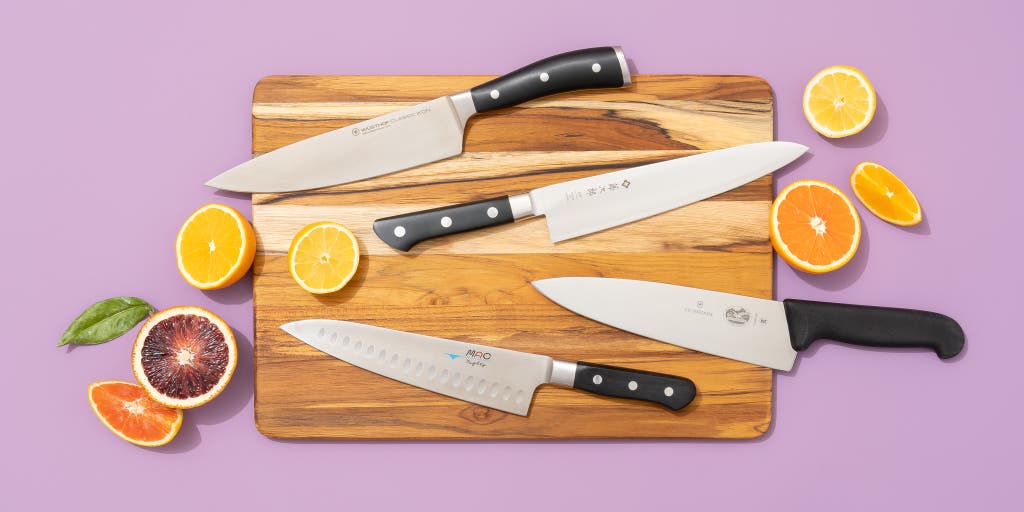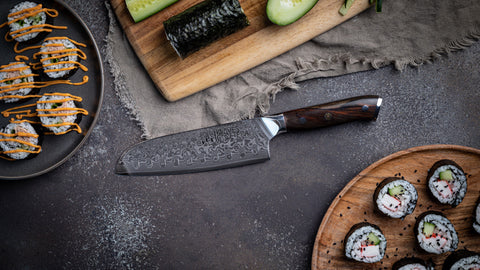The Santoku knife is a versatile tool in the kitchen, known for its ability to handle everything from slicing vegetables to mincing herbs. Whether you’re a professional chef or a home cook, keeping your Santoku knife sharp is essential for efficiency and safety. In this article, we will explore how to sharpen a Santoku knife, including the tools you’ll need, techniques for sharpening, and proper maintenance to ensure your knife remains in peak condition.

Understanding the Santoku Knife
The Santoku knife, originating from Japan, is characterized by its distinctive shape and sharpness. The blade typically measures between 5 to 8 inches and has a flat edge and a sheepsfoot blade that curves down at an angle. The Santoku knife is designed to perform three tasks: slicing, dicing, and chopping, which is reflected in its name, ‘Santoku,’ meaning ‘three virtues’ in Japanese.

Why a Sharp Santoku Knife is Important
A sharp Santoku knife allows for cleaner cuts, greater precision, and enhanced safety in the kitchen. Dull knives require more force to cut, increasing the risk of slipping and causing injury. Additionally, a sharper knife maintains the integrity of your ingredients, ensuring that they are not bruised or crushed during preparation. Research has shown that keeping your knives sharp is crucial for food quality and kitchen efficiency.

Essential Tools for Sharpening a Santoku Knife
Knife Sharpener
A quality knife sharpener is the most effective way to keep your Santoku knife in excellent condition. There are several types of knife sharpeners available, including electric sharpeners, manual pull-through sharpeners, and sharpening stones. Each type has its own advantages, so choosing the one that best suits your needs is important.
Sharpening Stone
A sharpening stone, also known as a whetstone, is a traditional method for sharpening knives and provides great control over the sharpening process. Whetstones come in various grits, with lower grits being more abrasive for removing material and higher grits for polishing.
Honing Rod
A honing rod, often referred to as a sharpening steel, realigns the edge of your knife between sharpenings. It helps maintain the knife’s edge and prolongs the time between full sharpenings.
Soft Cloth
A soft cloth is necessary for wiping down your knife after sharpening to ensure no metal particles remain on the blade. Additionally, it’s useful for drying the knife to prevent any corrosion.

Step-by-Step Guide to Sharpening a Santoku Knife
1. Prepare Your Sharpening Station
Designate a clean, stable workspace for sharpening your knife. Gather all necessary tools, including your sharpener, honing rod, and soft cloth. Ensure good lighting for accurate sharpening.
2. Selecting the Correct Angle
The sharpening angle for a Santoku knife is typically between 15 to 20 degrees. Holding the knife at the correct angle is crucial for achieving a sharp edge.
3. Using a Sharpening Stone
Begin by soaking your whetstone in water for about 10-15 minutes. Place the whetstone on a stable surface and hold your knife at the correct angle. Using a gentle back and forth motion, run the blade across the stone. Start with the coarse grit to remove any nicks and then progress to the finer grit for polishing.
4. Using a Knife Sharpener
If you prefer using a knife sharpener, follow the manufacturer’s instructions for the best results. Typically, you will pull the knife through the sharpening slots a few times at a consistent speed and pressure.
5. Honing Your Santoku Knife
After sharpening, use a honing rod to realign the knife’s edge. Hold the honing rod vertically with the tip on a stable surface. At the same angle used for sharpening, gently draw the knife down the rod on each side.
6. Cleaning Your Knife
Once your knife is sharpened and honed, use a soft cloth to wipe down the blade, removing any metal particles. Wash the knife with warm soapy water and dry it thoroughly.
Maintaining Your Sharpened Santoku Knife
Regular Honing
To maintain your knife’s edge, hone it regularly. This helps keep the blade aligned and reduces the frequency of full sharpenings.
Proper Storage
Store your Santoku knife in a knife block, magnetic strip, or protective sheath to keep the blade from dulling or getting damaged. Avoid storing knives loosely in drawers where they can knock against other utensils.
Safe Handling
Always handle your knife with care, avoiding unnecessary contact with hard surfaces like bones or countertops that can damage the blade.
Regular Cleaning
Keep your knife clean using warm water and mild detergent. Hand wash the knife, as dishwashers can cause the edge to dull and the handle to deteriorate over time.
Periodic Professional Sharpening
For optimal maintenance, consider having your Santoku knife professionally sharpened once a year. Professional sharpeners can restore the blade to its original condition, ensuring a long lifespan.
Common Sharpening Mistakes and How to Avoid Them
Incorrect Sharpening Angle
Using the incorrect angle can result in a dull edge or damage to the blade. Ensure you are holding the knife at the recommended 15 to 20-degree angle.
Applying Too Much Pressure
Excessive pressure can cause uneven sharpening and potential damage to the knife. Use a gentle, consistent pressure for the best results.
Neglecting to Hone
Honing is crucial for maintaining the knife’s edge between sharpenings. Skipping this step can result in a dull blade more quickly.
FAQs
1. How often should I sharpen my Santoku knife?
It’s recommended to sharpen your Santoku knife every 6 to 12 months, depending on usage. Regular honing will help maintain the edge between sharpenings.
2. Can I use an electric sharpener for my Santoku knife?
Yes, electric sharpeners can be used for Santoku knives. Ensure you follow the manufacturer’s instructions and use a sharpener suitable for your knife’s blade type.
3. What’s the difference between honing and sharpening?
Honing involves realigning the existing edge of the knife, while sharpening involves removing material to create a new edge. Regular honing can prolong the time between full sharpenings.
For more detailed guides on knife care, visit this page. Also, explore articles like how to use a chef knife and what is the best Japanese chef knife for more insights.
As an Amazon Associate, I earn from qualifying purchases.
As an Amazon Associate, I earn from qualifying purchases.


